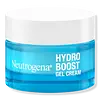What's inside
What's inside
 Key Ingredients
Key Ingredients

 Benefits
Benefits

 Concerns
Concerns

 Ingredients Side-by-side
Ingredients Side-by-side

Water
Skin ConditioningGlycerin
HumectantDimethicone
EmollientCetearyl Olivate
Sorbitan Olivate
EmulsifyingSodium Hyaluronate
HumectantSerine
MaskingGlycine
BufferingAlanine
MaskingThreonine
Arginine
MaskingProline
Skin ConditioningLysine Hcl
Skin ConditioningGlutamic Acid
HumectantSodium PCA
HumectantPCA
HumectantSodium Lactate
BufferingUrea
BufferingSodium Chloride
MaskingCitric Acid
BufferingBetaine
HumectantAllantoin
Skin ConditioningFructose
HumectantMaltose
MaskingTrehalose
HumectantGlucose
HumectantPentylene Glycol
Skin ConditioningSynthetic Beeswax
Emulsion StabilisingPolyacrylate Crosspolymer-6
Emulsion StabilisingDimethicone Crosspolymer
Emulsion StabilisingDimethiconol
EmollientEthylhexylglycerin
Skin ConditioningCaprylyl Glycol
EmollientSodium Hydroxide
BufferingWater, Glycerin, Dimethicone, Cetearyl Olivate, Sorbitan Olivate, Sodium Hyaluronate, Serine, Glycine, Alanine, Threonine, Arginine, Proline, Lysine Hcl, Glutamic Acid, Sodium PCA, PCA, Sodium Lactate, Urea, Sodium Chloride, Citric Acid, Betaine, Allantoin, Fructose, Maltose, Trehalose, Glucose, Pentylene Glycol, Synthetic Beeswax, Polyacrylate Crosspolymer-6, Dimethicone Crosspolymer, Dimethiconol, Ethylhexylglycerin, Caprylyl Glycol, Sodium Hydroxide
Zinc Oxide 15%
Cosmetic ColorantWater
Skin ConditioningCoconut Alkanes
EmollientCaprylic/Capric Triglyceride
MaskingPropanediol
SolventCoco-Caprylate/Caprate
EmollientPolyglyceryl-4 Diisostearate/Polyhydroxystearate/Sebacate
EmulsifyingMethyl Dihydroabietate
Spirulina Platensis Extract
Skin ProtectingC13-15 Alkane
SolventSodium Chloride
MaskingDistarch Phosphate
AbsorbentIsostearic Acid
CleansingPolyhydroxystearic Acid
EmulsifyingQuaternium-90 Bentonite
1,2-Hexanediol
Skin ConditioningBenzyl Alcohol
PerfumingHydroxyacetophenone
AntioxidantZinc Stearate
Cosmetic ColorantEthyl Ferulate
AntioxidantTriethyl Citrate
MaskingButylene Glycol
HumectantLactobacillus Ferment
Skin ConditioningPassiflora Edulis Fruit Extract
Skin ConditioningCamellia Sinensis Leaf Extract
AntimicrobialZinc Oxide 15%, Water, Coconut Alkanes, Caprylic/Capric Triglyceride, Propanediol, Coco-Caprylate/Caprate, Polyglyceryl-4 Diisostearate/Polyhydroxystearate/Sebacate, Methyl Dihydroabietate, Spirulina Platensis Extract, C13-15 Alkane, Sodium Chloride, Distarch Phosphate, Isostearic Acid, Polyhydroxystearic Acid, Quaternium-90 Bentonite, 1,2-Hexanediol, Benzyl Alcohol, Hydroxyacetophenone, Zinc Stearate, Ethyl Ferulate, Triethyl Citrate, Butylene Glycol, Lactobacillus Ferment, Passiflora Edulis Fruit Extract, Camellia Sinensis Leaf Extract
 Reviews
Reviews

Ingredients Explained
These ingredients are found in both products.
Ingredients higher up in an ingredient list are typically present in a larger amount.
Chances are, you eat sodium chloride every day. Sodium Chloride is also known as table salt.
This ingredient has many purposes in skincare: thickener, emulsifier, and exfoliator.
You'll most likely find this ingredient in cleansers where it is used to create a gel-like texture. As an emulsifier, it also prevents ingredients from separating.
There is much debate on whether this ingredient is comedogenic. The short answer - comedogenic ratings don't tell the whole story. Learn more about comegodenic ratings here.
The concensus about this ingredient causing acne seems to be divided. Research is needed to understand if this ingredient does cause acne.
Scrubs may use salt as the primary exfoliating ingredient.
Learn more about Sodium ChlorideWater. It's the most common cosmetic ingredient of all. You'll usually see it at the top of ingredient lists, meaning that it makes up the largest part of the product.
So why is it so popular? Water most often acts as a solvent - this means that it helps dissolve other ingredients into the formulation.
You'll also recognize water as that liquid we all need to stay alive. If you see this, drink a glass of water. Stay hydrated!
Learn more about Water